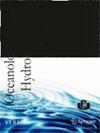Intercellular and extracellular amino acids of different bloom species in the Mediterranean Sea
IF 1
4区 环境科学与生态学
Q4 OCEANOGRAPHY
引用次数: 0
Abstract
Abstract The presented laboratory experiment was designed to characterize the quantity and compositional variation of algal extracellular amino acids (AAs) that may represent an alternative nutrient source in a natural environment. To resemble algal bloom scenarios, analyses were conducted in mono- and/or co-cultures of the bloom-forming species Skeletonema costatum, Scrippsiella trochoidea, Ulva fasciata, and Corallina officinalis during their active growth phase. The study revealed that S. costatum exhibited higher production of the dominant AAs than S. trochoidea. Alanine, lysine, and threonine acids are the dominant amino acids in S. costatum and S. trochoidea filtrates, which may play a role in mucus formation during mucosal phytoplankton blooms with negative ecological effects. On the other hand, aspartic, glutamine, alanine, and leucine acids are the dominant amino acids in macroalgae. In co-culture experiments, U. fasciata shows strong and rapid allelopathic activity against these two potentially harmful species. The AA production offers an advantage to species with the capacity to absorb them to form blooms. Thus, anthropogenic inorganic nutrient inputs may be less important for the development of algal blooms in coastal waters. A major difference that distinguishes this work from others is the use of specific multi-taxa cultures of phytoplankton and macroalgae. The study represents a new research effort in Alexandria waters.地中海不同水华物种的细胞间和细胞外氨基酸
摘要所提出的实验室实验旨在表征藻类细胞外氨基酸(AAs)的数量和组成变化,AAs可能代表自然环境中的替代营养源。为了模拟藻类水华的情况,在水华形成物种中,在其活跃生长阶段,对形成水华的物种中的中肋骨条藻(Skeletonema costatum)、轮状斯克里普菌(Scrippiella trochoidea)、筋膜Ulva和珊瑚(Corallina officinalis)的单培养物和/或共培养物中进行了分析。研究表明,肋藻的优势氨基酸产量高于滑车藻。丙氨酸、赖氨酸和苏氨酸是肋藻和滑车藻滤液中的主要氨基酸,它们可能在粘膜浮游植物繁殖期间的粘液形成中发挥作用,具有负面的生态影响。另一方面,天冬氨酸、谷氨酰胺、丙氨酸和亮氨酸是大型藻类中的主要氨基酸。在共培养实验中,筋膜藻对这两种潜在的有害物种表现出强烈而快速的化感作用。AA的生产为有能力吸收它们形成花朵的物种提供了优势。因此,人为无机营养物质输入对沿海水域藻类水华的发展可能不那么重要。这项工作与其他工作的一个主要区别是使用了浮游植物和大型藻类的特定多分类群培养。这项研究代表了亚历山大水域的一项新的研究工作。
本文章由计算机程序翻译,如有差异,请以英文原文为准。
求助全文
约1分钟内获得全文
求助全文
来源期刊
CiteScore
1.70
自引率
11.10%
发文量
8
审稿时长
>12 weeks
期刊介绍:
Oceanological and Hydrobiological Studies is an international journal published by the Institute of Oceanography, University of Gdańsk in Poland. The journal has 4 issues per year and contains papers on all aspects of the marine environment and hydrobiology. All manuscripts are reviewed by editors and independent experts. Based on the referees'' recommendations, the Editor will make a decision on whether to accept a contribution. All articles are published in English. The journal is open to all matters concerning the water environment, thus providing the readers with a wide spectrum of topics in every issue.

 求助内容:
求助内容: 应助结果提醒方式:
应助结果提醒方式:


